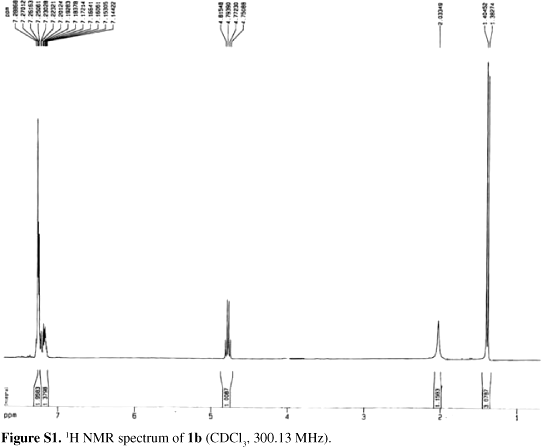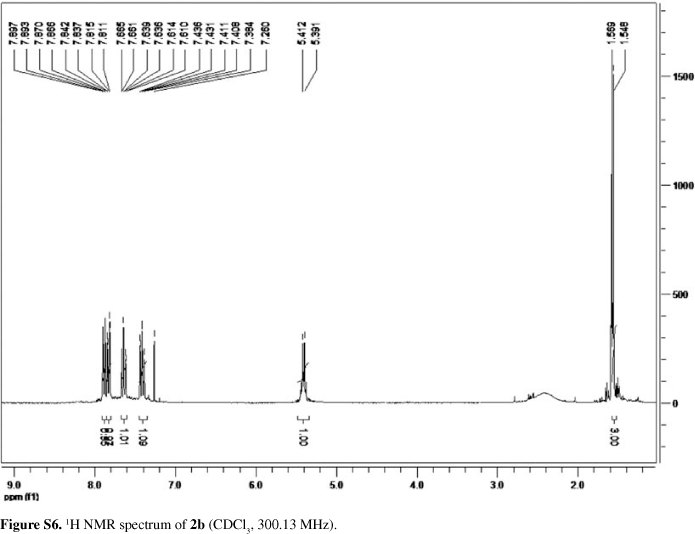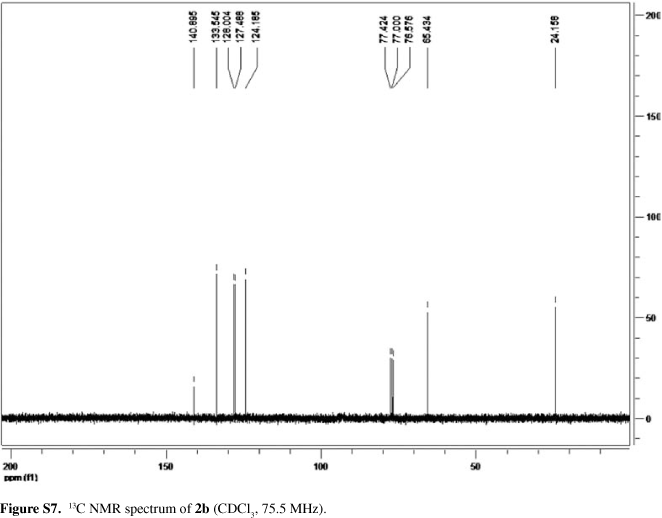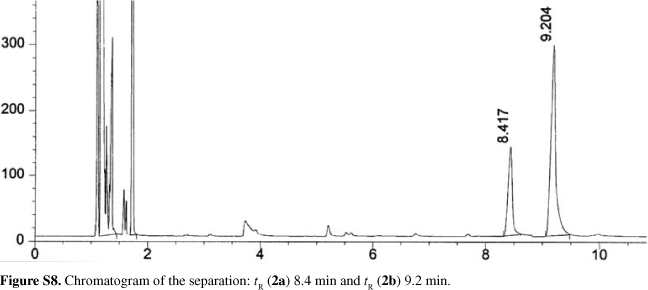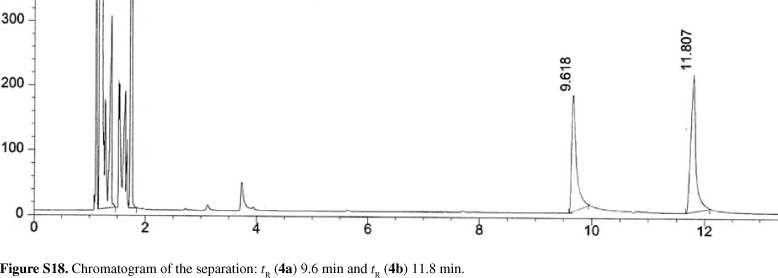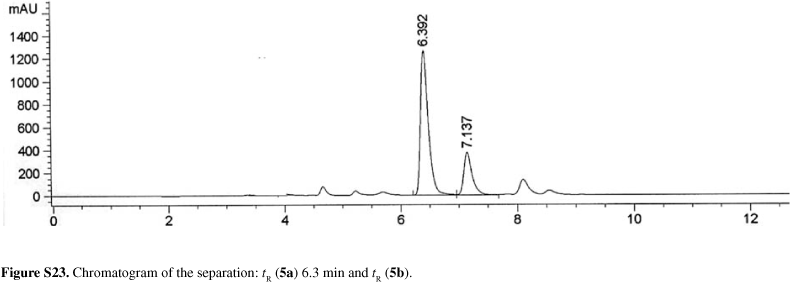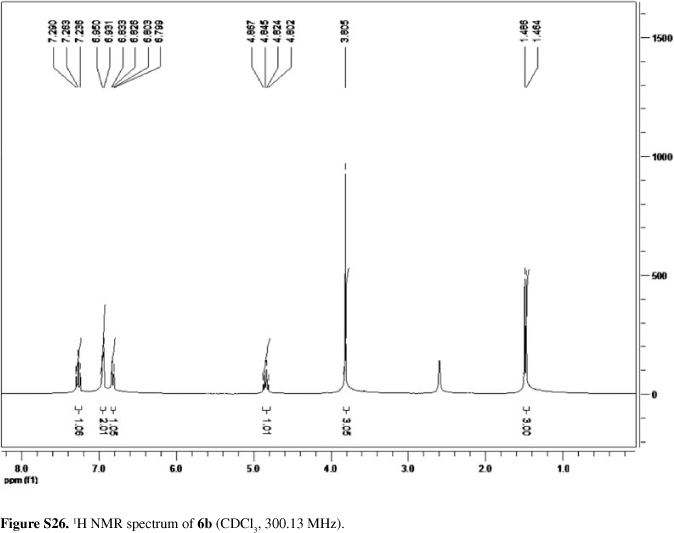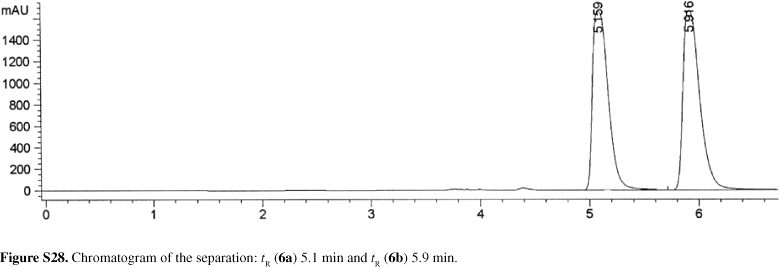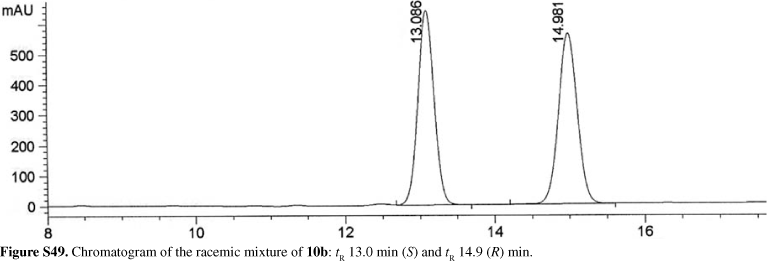Abstracts
The reactivity and stereoselectivity showed by a new strain of Candida tropicalis in the reduction of prochiral ketones have been compared with the ones previously attained in our laboratory using microorganisms from the Brazilian biodiversity. In this manner, Candida tropicalis has demonstrated its versatility as stereoselective agent in the bioreduction of a series of aromatic ketones. These prochiral compounds were converted into their corresponding optically alcohols with moderate to excellent stereopreference depending on the substrate structure. Among ketones tested, nitroacetophenones were enzymatically reduced to enantiopure (S)-alcohol with complete conversion.
alcohol dehydrogenases; biocatalysis; Candida tropicalis; ketones; yeast
A reatividade e estereosseletividade apresentadas por uma nova cepa de Candida tropicalis na redução de cetonas pró-quirais foram comparadas com cepas de microrganismos, estudadas em nosso laboratório, provenientes da biodiversidade brasileira. Neste caso, Candida tropicalis demonstrou-se como um agente redutor versátil e estereosseletivo na biorredução de uma série de cetonas aromáticas. Estes compostos pró-quirais foram convertidos aos correspondentes álcoois opticamente ativos com moderada a excelente estereopreferência dependendo da estrutura do substrato. Entre as cetonas utilizadas, as nitroacetofenonas foram enzimaticamente reduzidas aos correspondentes (S)-álcoois enantiopuros com completa conversão.
ARTICLE
Candida tropicalis CE017: a new Brazilian enzymatic source for the bioreduction of aromatic prochiral ketones
Gizelle A. B. VieiraI; Daniel M. de Freitas AraujoI; Telma L. G. LemosI; Marcos Carlos de MattosI, * * e-mail: mcdmatto@ufc.br; vgs@fq.uniovi.es ; Maria da Conceição F. de OliveiraI; Vânia M. M. MeloI; Gonzalo de GonzaloII; Vicente Gotor-FernándezII; Vicente GotorII, * * e-mail: mcdmatto@ufc.br; vgs@fq.uniovi.es
IDepartamento de Química Orgânica e Inorgânica, Universidade Federal do Ceará, 60451-970 Fortaleza-CE, Brazil
IIDepartamento de Química Orgánica e Inorgánica, Instituto Universitario de Biotecnología de Asturias, Universidad de Oviedo, c/ Julián Clavería 8, 33006, Oviedo, Spain
ABSTRACT
The reactivity and stereoselectivity showed by a new strain of Candida tropicalis in the reduction of prochiral ketones have been compared with the ones previously attained in our laboratory using microorganisms from the Brazilian biodiversity. In this manner, Candida tropicalis has demonstrated its versatility as stereoselective agent in the bioreduction of a series of aromatic ketones. These prochiral compounds were converted into their corresponding optically alcohols with moderate to excellent stereopreference depending on the substrate structure. Among ketones tested, nitroacetophenones were enzymatically reduced to enantiopure (S)-alcohol with complete conversion.
Keywords: alcohol dehydrogenases, biocatalysis, Candida tropicalis, ketones, yeast
RESUMO
A reatividade e estereosseletividade apresentadas por uma nova cepa de Candida tropicalis na redução de cetonas pró-quirais foram comparadas com cepas de microrganismos, estudadas em nosso laboratório, provenientes da biodiversidade brasileira. Neste caso, Candida tropicalis demonstrou-se como um agente redutor versátil e estereosseletivo na biorredução de uma série de cetonas aromáticas. Estes compostos pró-quirais foram convertidos aos correspondentes álcoois opticamente ativos com moderada a excelente estereopreferência dependendo da estrutura do substrato. Entre as cetonas utilizadas, as nitroacetofenonas foram enzimaticamente reduzidas aos correspondentes (S)-álcoois enantiopuros com completa conversão.
Introduction
Chiral alcohols are an important class of organic substrates due to their properties as bioactive compounds and as starting materials for the synthesis of various biologically active materials.1 For example, enantiopure 1-phenylethanol is a chiral building block used in the fine chemical and pharmaceutical industries as an ophthalmic preservative, a solvatochromic dye, an inhibitor of cholesterol intestinal absorption and a mild floral fragrance.2 In the synthesis of enantiopure chiral secondary alcohols, prochiral ketones are commonly used as starting materials using stereoselective chemical transformations or biocatalytic methods. Asymmetric reduction by chemical methods usually involves the use of expensive reagents or heavy metal catalysts.3 By contrast, biocatalysis applied to industrial processes has been shown as a very advantageous alternative to conventional chemical methods, and is widely used for the preparation of enantiomerically pure pharmaceuticals and other high added value compounds.4
Enzymatic reduction of carbonyl groups represents one of the most important reactions employed in the synthesis of chiral alcohols. Enzymes that can be used for this transformation are oxidoreductases, which require the presence of a coenzyme, such as NADH or NADPH, which transfers the hydride anion to the carbonyl compound, being formed NAD+ or NADP+. Whole cells of microorganisms can be also used in the enzymatic reduction of the carbonyl group. Each cell represents a small factory fully equipped for the reduction of the substrate bearing the carbonyl moiety. In order to find optimal conditions for the action of cell factories, the process designer has only to plan in which way the ketonic substrate should be added, and which medium should be used for the designed reaction. Nowadays, a wide variety of cultured cells from microorganisms or vegetables are available for enzyme-mediated reduction of carbonyl compounds.5
It is well known that the screening of a wide variety of microorganisms living in the environment is an efficient method to obtain the desired enzyme towards an unnatural substrate. Acetophenone has been used as a model substrate for the isolation of microorganisms having ketone reductase activity.6 Recently, a new strain of Candida tropicalis PBR-2 MTCC 5158 has been reported as an efficient reducing agent to acetophenone and its derivatives.7
The use of microorganism new strains as biocatalysts may offer an alternative opportunity to investigate the local resources for the effective conduct of key synthetic transformations with significant economic and ecological implications.8
Our research interest is based on the development of chemoenzymatic methodologies to obtain chiral alcohols using Brazilian local sources of low cost. Herein, we report our current investigations in the study of the Candida tropicalis CE017 strain behavior as a novel stereoselective reducing agent of aromatic prochiral ketones to the corresponding chiral alcohols. The experimental results obtained will be compared to the one previously obtained by our research group using different Brazilian enzymatic sources.9,10
Results and Discussion
Bioreduction of acetophenone using C. tropicalis CE017
Acetophenone 1a was tested in the bioreduction using growing cells of the yeast as biocatalyst in a potato dextrose broth medium.
Enzymatic reductions have been followed by analyzing the product 1b formed after 1, 3, 6, 9, 12 and 15 days of reaction, being summarized the data in Table 1. (S)-1-phenylethanol 1b was obtained with high optical purities (97-99% ee) in all cases, observing the maximum conversion (62%, entry 4) after 9 days of reaction. Longer reaction times led to the formation of acetophenone due to an oxidizing activity showed by Candida tropicalis.
In our efforts to improve the yield of (S)-1-phenylethanol 1b, some other reaction parameters were analyzed as culture medium, pH, temperature and substrate concentration.
Culture medium
Acetophenone bioreductions were performed during 9 days, at 28 ºC, using two different culture media to obtain whole cells of C. tropicalis CE017: (i) peptone 10 g L-1, dextrose 20 g L-1 pH 6.5,11 and (ii) Czapeck: NaNO3 (3 g L-1), K2HPO4 (1.0 g L-1), MgSO4.7H2O, KCl (0.5 g L-1), FeSO4 (0.01 g L-1), dextrose (30 g L-1), pH 8.5.12 Additionally the bioreduction was performed adjusting the pH of both media to 5.5 with a sterile solution of tartaric acid 10%. The results obtained are listed in Table 2.
These results revealed that all the new culture media have similar effect in the enzymatic activity (11-13% conversion), allowing the recovery of (S)-1-phenylethanol in enantiomerically pure form. All these media led to notable lower isolated yields in comparison with potato dextrose medium (62% yield at pH 7.0).
pH Influence
Reactions were analyzed after 9 days using potato dextrose broth as culture medium in the following pHs: 4.0, 5.5, 7.0 and 8.0. The medium was adjusted to pH 8.0 and 7.0 with a sterile solution of NaOH 1.0 mol L-1, and pH 4.0 was adjusted by using a sterilized 10% tartaric acid solution. The results were summarized in Table 3.
The optimal pH for this biocatalytic system varied from 5.5 to 7.0 (entries 2 and 3), observing a decrease of conversion when more acidic or basic media were employed (entries 1 and 4).
Temperature effect on Candida tropicalis
Reactions were performed using potato dextrose broth at higher temperatures (45 and 55 ºC), as shown in Table 4.
These results revealed that C. tropicalis does not present a good thermostabilitity, as a decrease of the ketone reductase activity was observed by working at temperatures above 28 ºC (entries 1 and 2), leading to a dramatic loss of yield and also of the enantiomeric excess especially over 45 ºC (entry 3).
Quantity of substrate
Bioreduction reactions were performed during 9 days at 28 ºC in potato dextrose broth using 6, 8, 10, 12, 14, 15, 20, 30 and 40 μL of acetophenone 1a to obtain (S)-1-phenylethanol in high to excellent enantiomeric excess (Table 5).
A slight improvement was observed in the conversion when less quantity of substrate (6-12 μL) was used, but in these conditions was observed a 85% ee in (S)-1-phenylethanol (entries 1-4). The conversion decreased when more quantity of substrate was used (entries 5-9), however higher concentrations of ketone led to better stereopreference values, being in this case 15-20 μL the appropriate quantity of ketone (entries 6-7).
Thus, a temperature of 28 ºC, 9 days of reaction time, pH of 5.5, potato-dextrose broth as culture medium and 20 μL of acetophenone proved to be the optimum conditions to obtain (S)-1-phenylethanol (1b) in good yield (62%) and high enantiomeric excess (97% ee).
Bioreduction of acetophenone derivatives
After these encouraging results, we decided to extend our studies toward the analysis of the bioreduction of substituted acetophenones. Thus, ketones 2a-10a (Scheme 2) were reduced by growing cells of C. tropicalis CE017 using the optimal reaction conditions attained in the bioreduction of acetophenone. The results are summarized in Table 6.
The influence of an electron-donor (OMe) group and an electron-withdrawing (NO2) group in ortho, meta- and para- position of the aromatic moiety was analyzed. Reduction of nitroacetophenones occurred with complete conversion yielding the corresponding alcohols (S)-2b-4b with excellent enantioselectivities (entries 1-3). The presence of the nitro group strongly increased the enzymatic activity when compared with acetophenone. Ketone 5a having the methoxy group in the ortho position yielded the corresponding alcohol (S)-5b with moderate conversion and selectivity (entry 4). When the methoxy group was located at meta position, the conversion was lower when compared with ketone 5a, being achieved a higher selectivity (entry 5). A strongly decrease in the activity and selectivity was observed for the reduction of 4-methoxyacetophenone (entry 6). The presence of the methoxy group in the para position seemed to be worst for enzymatic activity and selectivity.
4-Chloroacetophenone 8a yielded the (S)-8b with moderate conversion and selectivity (entry 7). The presence of the chlorine atom in the α-position to the carbonyl group produced a strong decrease in the product conversion with a good enantioselectivity, as shown in entry 8 for the preparation of alcohol (S)-9b, yielding in this case the (R)-alcohol due to CIP rules (entry 8).
Bioreduction of 10a, compound presenting two chlorine atoms in the aromatic ring and one chlorine atom in the α-position to the carbonyl group, occurred with a similar conversion to acetophenone 8a and a similar stereoselectivity compared to ketone 9a (entry 9). Again, (R)-10b was obtained due to a change of priority in the CIP rules.
Our research group has been working to select several microorganisms from Brazilian biodiversity in order to perform selective bioreduction reactions using whole cells. We have found some interesting suppliers of alcohol dehydrogenases such Lasiodiplodia theobromae9 and Lentinus strigellus10 and now we can compare the results previously obtained in these manuscripts with Candida tropicalis. Each one is worth of attention due to their particularities. Candida tropicalis has not a good affinity for acetophenones bearing methoxy group moiety. Opposite, fungal cells of L. theobromae and L. strigellus catalyze the bioreduction of these methoxyacetophenones with higher enantioselectivities (87-99%). On the other hand, L. theobromae had poor selectivity for nitroacetophenones, 3a (only 45% of ee) and 4a (42% of ee). Lentinus strigellus had good enantioselectivities (98-99%) but moderate conversion of 2a (48%), that could not be improved after longer reaction times. Candida tropicalis was the most successful among them to reduce nitroacetophenones with high to excellent conversion and enantioselectivity values. It must be emphasize that nitrocompounds are important building blocks in organic synthesis13 as well as precursors of the corresponding amines after a reduction process.14 In addition, alcohol 6b is a relevant compound in the synthesis of (S)-Rivastigmine15 and the alcohol 10b can be used in the preparation of the pharmacological active Sertraline.16
In conclusion, all this family of chiral alcohols can be obtained by an enzymatic strategy, just selecting the best local microorganism in each specific case.
Conclusions
Growing cells of a new yeast strain, C. tropicalis CE017 in potato dextrose have been shown as an excellent and inexpensive biocatalyst for the introduction of chirality in bioreduction processes. When reducing substituted aromatic ketones, the presence of a nitro group in the aromatic moiety has a positive effect in the biocatalytic properties of C. tropicalis CE017, yielding the corresponding alcohols with complete conversion and ee > 95%. On the other hand, methoxyacetophenones seemed to be poorer substrates for this yeast. In all cases the biocatalyst has presented Prelog selectivity for the production of optically active alcohols. Comparison with two microorganisms previously studied in our group (L. theobromae and L. strigellus) revealed its particularities. In this case, Candida tropicalis was the most successful among them to reduce nitroacetophenones with great conversion and enantioselectivity. The evaluation of locally available microorganisms for a selection of standard organic chemical reactions of commercial significance could prove to be a very valuable economic endeavor. It may well offer new opportunities to expand the local resources as sustainable enzymatic systems where high-cost, unstable coenzymes are presently used.
Experimental
General
All reagents were purchased from Aldrich and used without further purification. Dry solvents were distilled over an adequate desiccant under nitrogen. Flash chromatographies were performed using silica gel 60 (230-240 mesh). High performance liquid chromatography (HPLC) analysis were carried out in a Hewlett Packard 1100 chromatograph UV detector at 210 nm using a Daicel Chiralcel OB-H, Chiralpak AS or Chiralpak IA column (25 cm × 4.6 mm I.D.) varying the conditions depending on the specific substrate, and using mixtures of hexane and 2-propanol (IPA). Gas chromatography (GC) analysis were performed on a Hewlett Packard 6890 Series II chromatograph equipped with a CP-Chiralsil DEX CB or a HP-1 column (30 m × 0.25 mm × 0.25 μm, 1.0 bar N2) from Varian for determining the optical purities. 1H, 13C NMR, DEPT, and 1H-13C heteronuclear experiments were obtained using AC-200 (1H, 200.13 MHz and 13C, 50.3 MHz), AC-300 (1H, 300.13 MHz and 13C, 75.5 MHz), DPX-300 (1H, 300.13 MHz and 13C, 75.5 MHz) or AV-400 (1H, 400.13 MHz and 13C, 100.6 MHz) Bruker spectrometers. The chemical shifts are given in delta (δ) values and the coupling constants (J) in Hertz (Hz). Optical rotations were performed in a Perkin-Elmer 241 polarimeter.
General procedure for preparation of racemic alcohols 1a-10a
To a solution of the corresponding ketone 1a-10a (200 mg) in dry MeOH (4.0 mL) was slowly added sodium borohydride (4 equiv) at 0 ºC under nitrogen atmosphere. The reaction was stirred at room temperature during 3 h and followed by TLC analysis (20% EtOAc/hexane) until complete disappearance of the starting ketone. Solvent was evaporated under reduced pressure and the resulting suspension was redissolved in H2O and extracted with EtOAc (3 × 100 mL). Organic phases were combined and dried over anhydrous Na2SO4. After solvent distillation under reduced pressure, the resulting crude product was purified by flash chromatography [10% EtOAc/hexane for 1b (88% yield) and 10b (92% yield), 15% EtOAc/hexane for 5b (74% yield), 6b (86% yield), 7b (96% yield), 8b (83% yield), 9b (90% yield) and 20% EtOAc/hexane for 2b (97% yield), 3b (95% yield), and 4b (95% yield)].
Candida tropicalis strain CE017
The strain CE017 was previously isolated from an oil refinery wastewater located in Fortaleza city (Ceara state, Brazil) by enrichment cultivation.17 This strain was identified as Candida tropicalis according to micromorphological and biochemical characteristics.18 It is noteworthy that C. tropicalis CE017 showed a particular ability to degrade high phenol concentration and might be useful in bioremediation activities.17 This strain is deposited in the Culture Collection of the Microbial Ecology and Biotechnology Laboratory at Biology Department of the Federal University of Ceará, Brazil.
Culture conditions
For inoculums preparation, stock cultures were cultivated in potato broth (Potato 4 g L-1, Dextrose 20 g L-1, HIMEDIA) pH 5.5 for 24 h at 28 ºC under shaking conditions (125 rpm). After this, the absorbance of the culture was adjusted with 0.15 mol L-1 NaCl solution to 0.5 at 600 nm to obtain a suspension of 32 × 106 CFU mL-1 determined by counting of colony forming units (CFU) on Potato Agar Plates. An aliquot of 1.0 mL of this suspension was inoculated in 250 mL Erlenmeyer flask containing 100 mL of Potato broth to produce biomass. When Peptone/Dextrose was used as medium the counting of CFU was 15 × 106 CFU mL-1. In the case of Czapeck medium the CFU value was 57 × 103 CFU mL-1.
Procedure for the bioreduction of acetophenone and its derivatives using Candida tropicalis
The growing cells of C. tropicalis CE017 were used for bioreduction reactions according literature procedure.19 Then, 20 mg of substrate were added into erlenmeyer flask and the reactions were shaken for 9 days of reaction. The content of each flask was saturated with sodium chloride, and then the aqueous phase was extracted with EtOAc (3 × 80 mL). The organic phase was dried over with Na2SO4 and then the solvent was evaporated under reduced pressure. The reaction crude was analyzed by the appropriate condition and purified by flash chromatography. All the bioreduction experiments were done in triplicate.
(S)-1-Phenylethanol, 1b
1 H NMR (CDCl3, 300.13 MHz): δ 1.39 (d, J 6.5 Hz, 3H, H2), 2.03 (s, 1H, OH), 4.77 (q, J 6.5 Hz, 1H, H1), 7.25 (m, 5H, H2' + H3' + H4' + H5'); 13C NMR (CDCl3, 75.5 MHz): δ 25.3 (C2 ); 70.5 (C1), 125.5 (C2' + C6'), 127.6 (C4'), 128.6 (C3' + C5'), 146.0 (C1'). Conditions for determination of the conversion by HPLC: 0.8 mL min-1, Hexane:IPA (95:5), 20 ºC, tR (1a) 5.8 min and tR (1b) 8.4 min. Column Spherisorb. Conditions for determination of the ee by HPLC: 0.8 mL min-1, hexane:IPA (95:5), 20 ºC, tR 10.2 (S) and tR 15.4 (R) min. Column OB-H. [α]D25 = -47.0, c 1.1, CHCl3, for 97% ee of (S)-enantiomer. lit.: [α]D22 = -62.8 (c 1.0, CHCl3), 98.5% ee.20
(S)-1-(2-Nitrophenyl)ethanol, 2b
1 H NMR (CDCl3, 300.13 MHz): δ 1.55 (3H, d, J 6.3 Hz, H2), 5.40 (1H, q, J 6.3 Hz, H1), 7.41 (1H, dt, J 8.1 and 1.2 Hz, H4'), 7.63 (1H, dt, J 8.1 and 1.5 Hz, H5'), 7.82 (1H, dd, J 8.1 and 1.2 Hz, H6'), 7.88 (1H, dd, J 8.1 and 1.5 Hz, H3'); 13C NMR (CDCl3, 75.5 MHz): δ 24.2 (C2), 65.4 (C1), 124.2 (C3'), 127.5 (C6'), 128.0 (C4'), 133.5 (C5'), 140.9 (C1' + C2'). Conditions for determination of the conversion by GC: Injector 225 ºC, Detector 250 ºC, 80 ºC (5 ºC min-1) 180 ºC (0 min), tR (2a) 8.4 min and tR (2b) 9.2 min. Column HP-1. Conditions for determination of the ee by HPLC: 0.8 mL min-1, hexane:IPA (97:3), 20 ºC, tR 22.1 min (R) and tR 23.9 (S) min. Column AS. [α]D25 = +29.8, c 0.4, CHCl3, for 99% ee of (S)-enantiomer.21
(S)-1-(3-Nitrophenyl)ethanol, 3b
1 HNMR (CDCl3, 300.13 MHz): δ 1.47 (3H, d, J 6.6 Hz, H2), 4.96 (1H, q, J 6.6 Hz, H1), 7.47 (1H, t, J 7.8 Hz, H5'), 7.67 (1H, d, J 7.8 Hz, H6'), 8.04 (1H, ddd, J 8.3, 2.1 and 0.9 Hz, H4'), 8.18 (1H, t, J 1.8 Hz, H2'); 13C NMR (CDCl3, 75.5 MHz): δ 25.2 (C2), 69.1 (C1), 120.2 (C4'), 122.1 (C2'), 129.3 (C5'), 131.6 (C6'), 147.8 (C1'), 148.1 (C3'). Conditions for determination of the conversion by GC: Injector 225 ºC, Detector 250 ºC, 80 ºC (5 ºC min-1) 180 ºC (0 min), tR (3a) 9.5 min and tR (3b) 11.4 min. Column HP-1. Conditions for determination of the ee by HPLC: 0.8 mL min-1, hexane:IPA (90:10), 20 ºC, tR 12.8 min (S) and tR 14.2 (R) min. Column OB-H. [α]D25 = -34.9, c 0.5 CH2Cl2, for 99% ee of (S)-enantiomer.22
(S)-1-(4-Nitrophenyl)ethanol, 4b
1 H NMR (CDCl3, 300.13 MHz): δ 1.50 (3H, d, J 6.6 Hz, H2), 5.01 (1H, q, J 6.6 Hz, H1), 7.53 (2H, d, J 8.7 Hz, H2'+ H6'), 8.17 (2H, d, J 8.7 Hz, H3' + H5'); 13C NMR (CDCl3, 75.5 MHz): δ 25.3 (C2), 69.5 (C1), 123.6 (C2' + C6'), 126.0 (C3' + C5'), 147.0 (C1'), 153.1 (C4'). Conditions for determination of the conversion by GC: Injector 225 ºC, Detector 250 ºC, 80 ºC (5 ºC min-1) 180 ºC (0 min), tR (4a) 9.6 min and tR (4b) 11.8 min. Column HP-1. Conditions for determination of the ee by HPLC: 0.8 mL min-1, hexane:IPA (95:5), 20 ºC, tR 11.7 min (R) and tR 12.8 (S) min. Column AS. [α]D25 = -24.6, c 0.5, CHCl3, for 96% ee of (S)-enantiomer.23
(S)-1-(2-Methoxyphenyl)ethanol, 5b
1 H NMR (CDCl3, 300.13 MHz): δ 1.52 (3H, d, J 6.6 Hz, H2), 3.88 (3H, s, OCH3), 5.11 (1H, q, J 6.6 Hz, H1), 6.90 (1H, dd, J 7.5 and 1.5 Hz, H3'), 6.98 (1H, dt, J 8.5 and 1.5 Hz, H5'), 7.29 (1H, dt, J 8.5 and 1.5 Hz, H6'), 7.36 (1H, dd, J 7.5 and 1.5 Hz, H4'); 13C NMR (CDCl3, 75.5 MHz): δ 22.8 (C2), 55.2 (OCH3), 66.3 (C1), 110.3 (C3'), 120.7 (C5'), 126.0 (C6'), 128.2 (C4'), 133.4 (C1'), 156.4 (C2'). Conditions for determination of the conversion by HPLC: 0.8 mL min-1, hexane:IPA (95:5), 20 ºC, tR (5a) 6.3 min and tR (5b) 7.1 min. Column Spherisorb. Conditions for determination of the ee by HPLC: 0.8 mL min-1, hexane:IPA (95:5), 20 ºC, tR 10.3 (S) and tR 16.8 (R) min. Column OB-H.[α]D25 = -4.5, c 0.4, CH2Cl2, for 56% ee of (S)-enantiomer.24
(S)-1-(3-Methoxyphenyl)ethanol, 6b
1 H NMR (CDCl3, 300.13 MHz): δ 1.47 (3H, d, J 6.6 Hz, H2), 3.81 (3H, s, OCH3), 4.83 (1H, q, J 6.6 Hz, H1), 6.81 (1H, dd, J 8.5 and 1.2 Hz, H6'), 6.93 (2H, m, H2' + H4'), 7.26 (1H, t, J 8.5 Hz, H5'); 13C NMR (CDCl3, 75.5 MHz): δ 25.0 (C2), 55.1 (OCH3), 70.0 (C1), 110.8 (C2'), 112.7 (C4'), 117.6 (C6'), 129.3 (C5'), 147.6 (C1'), 159.6 (C3'). Conditions for determination of the conversion by HPLC: 0.8 mL min-1, hexane:IPA (95:5), 20 ºC, tR (6a) 5.1 min and tR (6b) 5.9 min. Column Spherisorb. Conditions for determination of the ee by HPLC: 0.8 mL min-1, hexane:IPA (95:5), 20 ºC, tR 20.1 min (S) and tR 29.5 min (R). Column OB-H. [α]D25 = -21.6, c 0.34, MeOH, for 80% ee of (S)-enantiomer.25
(S)-1-(4-Methoxyphenyl)ethanol, 7b
1 H NMR (CDCl3, 300.13 MHz): δ 1.48 (3H, d, J 6.3 Hz, H2), 3.82 (3H, s, OCH3), 4.84 (1H, q, J 6.3 Hz, H1), 6.88 (2H, d, J 8.7 Hz, H3' + H5'), 7.30 (2H, d, J 8.7 Hz, H2' + H6'); 13C NMR (CDCl3, 75.5 MHz): δ 24.3 (C2), 55.2 (OMe), 69.8 (C1), 126.6 (C2' + C6'), 113.8 (C3' + C5'), 137.9 (C1'), 158.9 (C4'). Conditions for determination of the conversion by HPLC: 0.8 mL min-1, Hexane:IPA (95:5), 20 ºC, tR (7a) 7.3 min and tR (7b) 8.5 min. Column Spherisorb. Conditions for determination of the ee by HPLC: 0.8 mL min-1; hexane:IPA (95:5); 20 ºC, tR 13.4 min (S) and tR 18.7 (R) min. Column OB-H. [α]D25 = -2.2, c 0.5, CH2Cl2, for 9% ee of (S)-enantiomer.24
(S)-1-(4-Chlorophenyl)ethanol, 8b
1 H NMR (CDCl3, 300.13 MHz): δ 1.45 (1H, d, J 6.5 Hz, H1), 4.87 (q, J 6.5 Hz, H2), 7.30 (m, 4H, H2' + H3' +H5' + H6'); 13C NMR (CDCl3, 75.5 MHz): δ 25.1 (C2), 69.6 (C1), 126.7 (C2'), 128.5 (C3'), 132.9 (C4'), 144.1 (C1'). Conditions for determination of the conversion by GC: Injector 225 ºC, Detector 250 ºC, 90 ºC (3 ºC min-1) 105 ºC (5 ºC min-1) 120 ºC (20 ºC min-1) 200 ºC (0 min), tR (8a) 5.0 min and tR (8b) 5.6 min. Column HP-1. Conditions for determination of the ee by HPLC: 0.8 mL min-1, hexane:IPA (95:5), 20 ºC, tR 7. min (S) and tR 8.5 min (R). Column OB-H. [α]D25 = -32.4, CH2Cl2, c 0.5, for 62% ee of (S)-enantiomer.24
(R)-2-Chlorophenylethan-1-ol, 9b
1 H NMR (CDCl3, 300.13 MHz): δ 3.56 (1H, dd, J 11.4 and 3.3 Hz, H2), 3.66 (1H, dd, J 11.4 and 8.7 Hz, H2), 4.81 (1H, dd, J 8.7 and 3.6 Hz, H1), 7.30 (5H, m, H2' + H3' + H4' + H5' + H6'); 13C NMR (CDCl3 , 75.5 MHz): δ 50.8 (C2), 74.0 (C1), 126.0 (C2' + C6'), 128.4 and 128.6 (C3' + C5'), 139.9 (C1'). Conditions for determination of the conversion by GC: Injector 225 ºC, Detector 250 ºC, 90 ºC (3 ºC min-1) 105 ºC (5 ºC min-1) 120 (20 ºC min-1) 200 ºC (0 min), tR (9a) 4.1 min and tR (9b) 4.3 min. Column HP-1. Conditions for determination of the ee by HPLC: 0.8 mL min-1, hexane:IPA (95:5), 20 ºC, tR 13.2 (R) and tR 17.2 (S) min. Column OB-H. [α]D25 = -18.8, c 0.26, CH2Cl2, for 89% ee of (R)-enantiomer.26
(R)-2-Chloro-1-(3,4-dichlorophenyl)ethan-1-ol, 10b27
1 H NMR (CDCl3, 300.13 MHz): δ 3.59 (1H, dd, J 11.4, and 8.7 Hz, H2), 3.72 (1H, dd, J 11.4 and 3.6 Hz, H2), 4.87 (1H, dd, J 8.7 and 3.6 Hz, H1), 7.21 (1H, dd, J 8.4 and 1.8 Hz, H6'), 7.43 (1H, d, J 8.4 Hz, H5'), 7.51 (1H, d, J 1.8 Hz, H2'); 13C NMR (CDCl3, 75.5 MHz): δ 50.4 (C2), 72.8 (C1), 125.4 (C6'), 128.1 (C2'), 130.6 (C5'), 132.4 (C4'), 132.8 (C3'), 140.0 (C1'). Conditions for determination of the conversion by GC: Injector 225 ºC, Detector 250 ºC, 80 ºC (5 ºC min-1) 180 ºC (0 min); tR (10a) 13.6 and tR (10b) 14.8 min. Column HP-1. Conditions for determination of the ee by HPLC: 0.8 mL min-1, hexane:IPA (95:5), 20 ºC, tR 13.0 min (S) and tR 14.9 (R) min. Column IA. [α]D25 = -13.3, c 0.5, CHCl3, for 90% ee of (R)-enantiomer.28
Supplementary Information
Supplementary data for 1b-10b alcohols are available free of charge at http://jbcs.sbq.org.br, as a PDF file.
Acknowledgments
The authors thank to the Brazilian and Spanish agencies CAPES-DGU (Process: 149/07), CNPq, FUNCAP, PRONEX, Ministerio de Ciencia e Innovación (MICINN, Project CTQ 2007-61126) for fellowships and financial support. G. de G. and V. G.-F. thank MICINN for personal grants (Juan de la Cierva and Ramon y Cajal program, respectively).
References
1. Kurbanoglu, E. B.; Zilbeyaz, K.; Kurbanoglu, N. I.; Kilic, H.; Tetrahedron: Asymmetry 2007, 18, 2332.
2. Costa, L. F. A.; Lemos, F.; Ribeiro, F. R.; Cabral, J. M. S.; Catal. Today 2008, 133-135, 625.
3. Andersson, P. G.; Munslow, I. J.; Modern Reduction Methods, Wiley: Weinheim, 2008.
4. Dauâmann, T.; Rosen, T. C.; Dünkelmann, P.; Eng. Life Sci. 2006, 6, 125; Matsuda, T.; Yamanaka, R.; Nakamura, K.; Tetrahedron: Asymmetry 2009, 20, 513.
5. Jurcek, O.; Wimmerová, M.; Wimmer, Z.; Coord. Chem. Rev. 2008, 252, 767; Borges, K. B.; Borges, W. S.; Durán-Patrón, R.; Pupo, M. T.; Bonato, P. S.; Collado, I. G.; Tetrahedron: Asymmetry 2009, 20, 385.
6. Patel, R. N.; Stereoselective Biocatalysis, Marcel Dekker: New York, 2000.
7. Banerjee, C.; Soni, P.; Biotechnol. J. 2006, 1, 80.
8. Liria, C. W.; Romagna, C. D.; Rodovalho, N. N.; Marana, S. R.; Miranda, M. T. M.; J. Braz. Chem. Soc. 2008, 19, 1574; Zanotto, S. P.; Romano, I. P.; Lisboa, L. U. S.; Duviosin Jr., S.; Martins, M. K.; Lima, F. A.; Silva, S. F.; Albuquerque, P. M.; J. Braz. Chem. Soc. 2009, 20, 1046.
9. Barros-Filho, B. A.; Nunes, F. M.; Oliveira, M. C. F.; Lemos, T. L. G.; Mattos, M. C.; de Gonzalo, G.; Gotor-Fernández, V.; Gotor, V.; J. Mol. Catal. B: Enzym., doi:10.1016/j.molcatb.2010.01.023.
10. Barros-Filho, B. A.; Oliveira, M. C. F.; Lemos, T. L. G.; Mattos, M. C.; de Gonzalo, G.; Gotor-Fernández, V.; Gotor, V.; Tetrahedron: Asymmetry 2009, 20, 1057.
11. Andrade, L. H.; Keppler, A. F.; Schoenlein-Crusius, I. H.; Porto, A. L. M.; Comasseto, J. V.; J. Mol. Catal. B: Enzym. 2004, 31, 129.
12. Almeida, A. C. S.; Araújo, L. A.; Costa, A. M.; Abreu, C. A. M.; Lima, M. A. G. A.; Palha, M. L. A. P. F.; Eletron. J. Biotechnol. 2005, 8, 55.
13. Silverman, R. B.; The Organic Chemistry of Drug Design and Drug Action, Academic Press: San Diego, 1992; Barret, G. M.; Graboski, G. G.; Chem. Rev. 1986, 86, 751.
14. Trost, B. M.; Fleming, I.; Comprehensive Organic Synthesis, Pergamon Press: New York, 1991, vol. 8; Ram, S.; Ehrenkaufer, R. E.; Tetrahedron Lett. 1984, 25, 3415; Yuste, F.; Saldana, M.; Walls, F.; Tetrahedron Lett. 1982, 23, 147.
15. Mangas-Sánchez, J.; Rodrígez-Mata, M.; Busto, E.; Gotor-Fernández, V.; Gotor, V.; J. Org. Chem. 2009, 15, 5304.
16. Barbieri, C.; Bossi, L.; D'arrigo, P.; Fantoni, G. P.; Servi, S.; J. Mol. Catal. B: Enzym. 2001, 11, 415.
17. Rocha, L. L.; Cordeiro, R. A.; Cavalcante, R. M.; Nascimento, R. F.; Martins, S. C. S.; Santaella, S. T.; Melo, V. M. M.; Mycopathologia 2007, 164, 183.
18. de Hoog, G. S.; Guarro, J.; Gene, J.; Figueras, M. J.; Atlas of Clinical Fungi, 2nd ed., Réus: Centraalbureau voor Schimmelcultures/Universitat Rovira i Virgili: Spain, 2000.
19. Andrade, L. H.; Comasseto, J. V.; Rodrigues, D. F.; Pellizari, V. H.; Porto, A. L. M.; J. Mol. Catal. B: Enzym. 2005, 33, 73.
20. Csajági, C.; Szatzker, G.; Toke, E. R.; Ürge, L.; Darvas, F.; Poppe, L.; Tetrahedron: Asymmetry 2008, 19, 237.
21. Seror, S.; Collin, J.; Fiaud, J. C.; Zouioueche, L. A.; J. Mol. Catal. A: Chem. 2006, 256, 85.
22. Ma, Y.; Liu, H.; Chen, L.; Zhu, J.; Deng, J.; Org. Lett. 2003, 5, 2103.
23. Yang, S. D.; Shi, Y.; Sun, Z. H.; Zhao, Y.; Liang, Y.; Tetrahedron: Asymmetry 2006, 17, 1895.
24. Du, D.; Fang, T.; Xu, J.; Zhang, S.; Org. Lett. 2006, 8, 1327.
25. Morris, D. J.; Hayes, A. M.; Wills, M.; J. Org. Chem. 2006, 71, 7035.
26. Tanis, S. P.; Evans, B. R.; Nieman, J. A.; Parker, T. T.; Taylor, W. D.; Heasley, S. E.; Herrington, P. M.; Perrault, W. R.; Hohler, R. A.; Dolak, L. A.; Hester, M. R.; Seest, E. P.; Tetrahedron: Asymmetry 2006, 17, 2154.
27. Alcohol 10b is given as example of the numerical locants used for NMR assignment:
28. Zhu, D.; Mukherjee, C.; Hua, L.; Tetrahedron: Asymmetry 2005, 16, 3275.
Received: December 18, 2009
Web Release Date: April 15, 2010
Supplementary Information
(S)-1-Phenylethanol, 1b
1H NMR (CDCl3, 300.13 MHz): δ 1.39 (d, J 6.5 Hz, 3H, H2), 2.03 (s, 1H, OH), 4.77 (q, J 6.5 Hz, 1H, H1), 7.25 (m, 5H, H2' + H3' + H4' + H5'+ H6'). (Figure S1)
13C NMR (CDCl3, 75.5 MHz): δ 25.3 (C2), 70.5 (C1), 125.5 (C2' + C6' ), 127.6 (C4'), 128.6 (C3' + C5'), 146.0 (C1'). (Figure S2)
Conditions for determination of the conversion by HPLC: 0.8 mL min-1, hexane:IPA (95:5), 20 ºC, tR (1a) 5.5 in and tR (1b) 8.5 min. Column Spherisorb. (Figure S3)
Conditions for determination of the ee by HPLC: 0.8 mL min-1, hexane:IPA (95:5), 20 ºC, tR 10.2 (S) and tR 15.4 (R) min. Column OB-H. [α]D25 = -47.0, c 1.1, CHCl3, for 97% ee of (S)-enantiomer. lit.: [α]D22 = -62.8 (c 1.0, CHCl3), 98.5% ee. (Figures S4 and S5 )

Figure S5 - Click to enlarge
(S)-1-(2-Nitrophenyl)ethanol, 2b
1 H NMR (CDCl3, 300.13 MHz): δ 1.55 (3H, d, J 6.3 Hz, H2), 5.40 (1H, q, J 6.3 Hz, H1), 7.41 (1H, dt, J 8.1 and 1.2 Hz, H4'), 7.63 (1H, dt, J 8.1 and 1.5 Hz, H5'), 7.82 (1H, dd, J 8.1 and 1.2 Hz, H6'), 7.88 (1H, dd, J 8.1 and 1.5 Hz, H3'). (Figure S6)
13C NMR (CDCl3, 75.5 MHz): δ 24.2 (C2), 65.4 (C1), 124.2 (C3'), 127.5 (C6'), 128.0 (C4'), 133.5 (C5'), 140.9 (C1' + C2'). (Figure S7)
Conditions for determination of the conversion by GC: Injector 225 ºC, Detector 250 ºC, 80 ºC (5 ºC min-1) 180 ºC (0 min), tR (2a) 8.4 min and tR (2b) 9.2 min. Column HP-1. (Figure S8)
Conditions for determination of the ee by HPLC: 0.8 mL min-1, hexane:IPA (97:3), 20 ºC, tR 22.1 min (R) and tR 23.9 (S) min. Column AS. [α]D25 = +29.8, c 0.4, CHCl3, for 99% ee of (S)-enantiomer. (Figures S9 and S10 )

Figure S10 - Click to enlarge
(S)-1-(3-Nitrophenyl)ethanol, 3b
1 H NMR (CDCl3, 300.13 MHz): δ 1.47 (3H, d, J 6.6 Hz, H2), 4.96 (1H, q, J 6.6 Hz, H1), 7.47 (1H, t, J 7.8 Hz, H5'), 7.67 (1H, d, J 7.8 Hz, H6'), 8.04 (1H, ddd, J 8.3, 2.1 and 0.9 Hz, H4'), 8.18 (1H, t, J 1.8 Hz, H2'). (Figure S11)
13C NMR (CDCl3, 75.5 MHz): δ 25.2 (C2), 69.1 (C1), 120.2 (C4'), 122.1 (C2'), 129.3 (C5'), 131.6 (C6'), 147.8 (C1'), 148.1 (C3'). (Figure S12)
Conditions for determination of the conversion by GC: Injector 225 ºC, Detector 250 ºC, 80 ºC (5 ºC min-1) 180 ºC (0 min), tR (3a) 9.5 min and tR (3b) 11.4 min. Column HP-1. (Figure S13)
Conditions for determination of the ee by HPLC: 0.8 mL min-1, hexane:IPA (90:10), 20 ºC, tR 12.8 min (S) and tR 14.2 (R) min. Column OB-H. [α]D25 = -34.9, c 0.5 CH2Cl2, for 99% ee of (S)-enantiomer. (Figures S14 and S15 )

Figure S15 - Click to enlarge
(S)-1-(4-Nitrophenyl)ethanol, 4b
1 H NMR (CDCl3, 300.13 MHz): δ 1.50 (3H, d, J 6.6 Hz, H2), 5.01 (1H, q, J 6.6 Hz, H1), 7.53 (2H, d, J 8.7 Hz, H2' + H6'), 8.17 (2H, d, J 8.7 Hz, H3' + H5'). (Figure S16)
13C NMR (CDCl3, 75.5 MHz): δ 25.3 (C2), 69.5 (C1), 123.6 (C2' + C6'), 126.0 (C3' + C5'), 147.0 (C1'), 153.1 (C4'). (Figure S17)
Conditions for determination of the conversion by GC: Injector 225 ºC, Detector 250 ºC, 80 ºC (5 ºC min-1) 180 ºC (0 min), tR (4a) 9.6 min and tR (4b) 11.8 min. Column HP-1. (Figure S18)
Conditions for determination of the ee by HPLC: 0.8 mL min-1, hexane:IPA (95:5), 20 ºC, tR 11.7 min (R) and tR 13.6 (S) min. Column AS. [α]D25 = -24.6, c 0.5, CHCl3, for 96% ee of (S)-enantiomer. (Figures S19 and S20 )

Figure S20 - Click to enlarge
(S)-1-(2-Methoxyphenyl)ethanol, 5b
1 H NMR (CDCl3, 300.13 MHz): δ 1.52 (3H, d, J 6.6 Hz, H2), 3.88 (3H, s, OCH3), 5.11 (1H, q, J 6.6 Hz, H1), 6.90 (1H, dd, J 7.5 and 1.5 Hz, H3'), 6.98 (1H, dt, J 8.5 and 1.5 Hz, H5'), 7.29 (1H, dt, J 8.5 and 1.5 Hz, H6'), 7.36 (1H, dd, J 7.5 and 1.5 Hz, H4'). (Figure S21)
13C NMR (CDCl3, 75.5 MHz): δ 22.8 (C2), 55.2 (OCH3), 66.3 (C1), 110.3 (C3'), 120.7 (C5'), 126.0 (C6'), 128.2 (C4'), 133.4 (C1'), 156.4 (C2'). (Figure S22)
Conditions for determination of the conversion by HPLC: 0.8 mL min-1, hexane:IPA (95:5), 20 ºC, tR (5a) 6.3 min and tR (5b) 7.1 min. Column Spherisorb. (Figure S23)
Conditions for determination of the ee by HPLC: 0.8 mL min-1, hexane:IPA (95:5), 20 ºC, tR 10.3 (S) and tR 16.8 (R) min. Column OB-H. [α]D25 = -4.5, c 0.4, CH2Cl2, for 56% ee of (S)-enantiomer. (Figures S24 and S25 )

Figure S25 - Click to enlarge
(S)-1-(3-Methoxyphenyl)ethanol, 6b
1 H NMR (CDCl3, 300.13 MHz): δ 1.47 (3H, d, J 6.6 Hz, H2), 3.81 (3H, s, OCH3), 4.83 (1H, q, J 6.6 Hz, H1), 6.81 (1H, dd, J 8.5 and 1.2 Hz, H6'), 6.93 (2H, m, H2' + H4'), 7.26 (1H, t, J 8.5 Hz, H5'). (Figure S26)
13C NMR (CDCl3, 75.5 MHz): δ 25.0 (C2), 55.1 (OCH3), 70.0 (C1), 110.8 (C2'), 112.7 (C4'), 117.6 (C6'), 129.3 (C5'), 147.6 (C1'), 159.6 (C3'). (Figure S27)
Conditions for determination of the conversion by HPLC: 0.8 mL min-1, hexane:IPA (95:5), 20 ºC, tR (6a) 5.1 min and tR (6b) 5.9 min. Column Spherisorb. (Figure S28)
Conditions for determination of the ee by HPLC: 0.8 mL min-1, hexane:IPA (95:5), 20 ºC, tR 20.1 min (S) and tR 29.6 min (R). Column OB-H. [α]D25 = -21.6, c 0.34, MeOH, for 80% ee of (S)-enantiomer. (Figures S29 and S30 )

Figure S30 - Click to enlarge
(S)-1-(4-Methoxyphenyl)ethanol, 7b
1 H NMR (CDCl3, 300.13 MHz): δ 1.48 (3H, d, J 6.3 Hz, H2), 3.82 (3H, s, OCH3), 4.84 (1H, q, J 6.3 Hz, H1), 6.88 (2H, d, J 8.7 Hz, H3' + H5'), 7.30 (2H, d, J 8.7 Hz, H2' and H6'). (Figure S31)
13C NMR (CDCl3, 75.5 MHz): δ 24.3 (C2), 55.2 (OMe), 69.8 (C1), 126.6 (C2' + C6'), 113.8 (C3' + C5'), 137.9 (C1'), 158.9 (C4'). (Figure S32)
Conditions for determination of the conversion by HPLC: 0.8 mL min-1, hexane:IPA (95:5), 20 ºC, tR (7a) 7.3 min and tR (7b) 8.5 min. Column Spherisorb. (Figure S33)
Conditions for determination of the ee by HPLC: 0.8 mL min-1; hexane:IPA (95:5); 20 ºC, tR 13.4 min (S) and tR 18.7 (R) min. Column OB-H. [α]D25 = -2.2, c 0.5, CH2Cl2, for 9% ee of (S)-enantiomer. (Figures S34 and S35 )

Figure S35 - Click to enlarge
(S)-1-(4-Chlorophenyl)ethanol, 8b
1 H NMR (CDCl3, 300.13 MHz): δ 1.46 (3H, d, J 6.5 Hz, H1), 4.85 (1H, q, J 6.5 Hz, H2), 7.30 (4H, m, H2' + H3' + H5' + H6'). (Figure S36)
13C NMR (CDCl3, 75.5 MHz): δ 25.1 (C2), 69.6 (C1), 126.7 (C2'), 128.5 (C3'), 132.9 (C4'), 144.1 (C1'). (Figure S37)
Conditions for determination of the conversion by GC: Injector 225 ºC, Detector 250 ºC, 90 ºC (3 ºC min-1) 105 ºC (5 ºC min-1) 120 ºC (20 ºC min-1) 200 ºC (0 min), tR (8a) 5.0 min and tR (8b) 5.6 min. Column HP-1. (Figure S38)
Conditions for determination of the ee by HPLC: 0.8 mL min-1, hexane:IPA (95:5), 20 ºC, tR 7.5 min (S) and tR 8.5 min (R). Column OB-H. [α]D25 = -32.4, CH2Cl2, c 0.5, for 62% ee of (S)-enantiomer. (Figures S39 and S40 )

Figure S40 - Click to enlarge
(R)-2-Chlorophenylethan-1-ol, 9b
1 H NMR (CDCl3, 300.13 MHz): δ 3.56 (1H, dd, J 11.4 and 3.3 Hz, H2), 3.66 (1H, dd, J 11.4 and 8.7 Hz, H2), 4.81 (1H, dd, J 8.7 and 3.6 Hz, H1), 7.30 (5H, m, H2' + H3' + H4' + H5' +H6'). (Figure S41)
13C NMR (CDCl3, 75.5 MHz): δ 50.8 (C2), 74.0 (C1), 126.0 (C2' + C6'), 128.4 and 128.6 (C3' + C5'), 139.9 (C1'). (Figure S42)
Conditions for determination of the conversion by GC: Injector 225 ºC, Detector 250 ºC, 90 ºC (3 ºC min-1) 105 ºC (5 ºC min-1) 120 (20 ºC min-1) 200 ºC (0 min), tR (9a) 4.1 min and tR (9b) 4.3 min. Column HP-1. (Figure S43)
Conditions for determination of the ee by HPLC: 0.8 mL min-1, hexane:IPA (95:5), 20 ºC, tR 13.2 (R) and tR 17.6 (S) min. Column OB-H. [α]D25 = -18.8, c 0.26, CH2Cl2, for 89% ee of (R)-enantiomer. (Figures S44 and S45 )

Figure S45 - Click to enlarge
(R)-2-Chloro-1-(3,4-dichlorophenyl)ethan-1-ol, 10b
1 H NMR (CDCl3, 300.13 MHz): δ 3.59 (1H, dd, J 11.4 and 8.7 Hz, H2), 3.72 (1H, dd, J 11.4 and 3.6 Hz, H2), 4.87 (1H, dd, J 8.7 and 3.6 Hz, H1), 7.21 (1H, dd, J 8.4 and 1.8 Hz, H6'), 7.43 (1H, d, J 8.4 Hz, H5'), 7.51 (1H, d, J 1.8 Hz, H2'). (Figure S46)
13C NMR (CDCl3, 75.5 MHz): δ 50.4 (C2), 72.8 (C1), 125.4 (C6'), 128.1 (C2'), 130.6 (C5'), 132.4 (C4'), 132.8 (C3'), 140.0 (C1'). (Figure S47)
Conditions for determination of the conversion by GC: Injector 225 ºC, Detector 250 ºC, 80 ºC (5 ºC min-1) 180 ºC (0 min); tR (10a) 13.6 and tR (10b) 14.8 min. Column HP-1. (Figure S48)
Conditions for determination of the ee by HPLC: 0.8 mL min-1, hexane:IPA (95:5), 20 ºC, tR 13.0 min (S) and tR 14.9 (R) min. Column IA. [α]D25 = -13.3, c 0.5, CHCl3, for 90% ee of (R)-enantiomer. (Figures S49 and S50 )

Figure S50 - Click to enlarge
- 1. Kurbanoglu, E. B.; Zilbeyaz, K.; Kurbanoglu, N. I.; Kilic, H.; Tetrahedron: Asymmetry 2007, 18, 2332.
- 2. Costa, L. F. A.; Lemos, F.; Ribeiro, F. R.; Cabral, J. M. S.; Catal. Today 2008, 133-135, 625.
- 3. Andersson, P. G.; Munslow, I. J.; Modern Reduction Methods, Wiley: Weinheim, 2008.
- 4. Dauâmann, T.; Rosen, T. C.; Dünkelmann, P.; Eng. Life Sci. 2006, 6, 125;
- Matsuda, T.; Yamanaka, R.; Nakamura, K.; Tetrahedron: Asymmetry 2009, 20, 513.
- 5. Jurcek, O.; Wimmerová, M.; Wimmer, Z.; Coord. Chem. Rev. 2008, 252, 767;
- Borges, K. B.; Borges, W. S.; Durán-Patrón, R.; Pupo, M. T.; Bonato, P. S.; Collado, I. G.; Tetrahedron: Asymmetry 2009, 20, 385.
- 6. Patel, R. N.; Stereoselective Biocatalysis, Marcel Dekker: New York, 2000.
- 7. Banerjee, C.; Soni, P.; Biotechnol. J 2006, 1, 80.
- 8. Liria, C. W.; Romagna, C. D.; Rodovalho, N. N.; Marana, S. R.; Miranda, M. T. M.; J. Braz. Chem. Soc. 2008, 19, 1574;
- Zanotto, S. P.; Romano, I. P.; Lisboa, L. U. S.; Duviosin Jr., S.; Martins, M. K.; Lima, F. A.; Silva, S. F.; Albuquerque, P. M.; J. Braz. Chem. Soc. 2009, 20, 1046.
- 9. Barros-Filho, B. A.; Nunes, F. M.; Oliveira, M. C. F.; Lemos, T. L. G.; Mattos, M. C.; de Gonzalo, G.; Gotor-Fernández, V.; Gotor, V.; J. Mol. Catal. B: Enzym., doi:10.1016/j.molcatb.2010.01.023.
- 10. Barros-Filho, B. A.; Oliveira, M. C. F.; Lemos, T. L. G.; Mattos, M. C.; de Gonzalo, G.; Gotor-Fernández, V.; Gotor, V.; Tetrahedron: Asymmetry 2009, 20, 1057.
- 11. Andrade, L. H.; Keppler, A. F.; Schoenlein-Crusius, I. H.; Porto, A. L. M.; Comasseto, J. V.; J. Mol. Catal. B: Enzym 2004, 31, 129.
- 12. Almeida, A. C. S.; Araújo, L. A.; Costa, A. M.; Abreu, C. A. M.; Lima, M. A. G. A.; Palha, M. L. A. P. F.; Eletron. J. Biotechnol. 2005, 8, 55.
- 13. Silverman, R. B.; The Organic Chemistry of Drug Design and Drug Action, Academic Press: San Diego, 1992;
- Barret, G. M.; Graboski, G. G.; Chem. Rev. 1986, 86, 751.
- 14. Trost, B. M.; Fleming, I.; Comprehensive Organic Synthesis, Pergamon Press: New York, 1991, vol. 8;
- Ram, S.; Ehrenkaufer, R. E.; Tetrahedron Lett 1984, 25, 3415;
- Yuste, F.; Saldana, M.; Walls, F.; Tetrahedron Lett 1982, 23, 147.
- 15. Mangas-Sánchez, J.; Rodrígez-Mata, M.; Busto, E.; Gotor-Fernández, V.; Gotor, V.; J. Org. Chem 2009, 15, 5304.
- 16. Barbieri, C.; Bossi, L.; D'arrigo, P.; Fantoni, G. P.; Servi, S.; J. Mol. Catal. B: Enzym 2001, 11, 415.
- 17. Rocha, L. L.; Cordeiro, R. A.; Cavalcante, R. M.; Nascimento, R. F.; Martins, S. C. S.; Santaella, S. T.; Melo, V. M. M.; Mycopathologia 2007, 164, 183.
- 18. de Hoog, G. S.; Guarro, J.; Gene, J.; Figueras, M. J.; Atlas of Clinical Fungi, 2nd ed., Réus: Centraalbureau voor Schimmelcultures/Universitat Rovira i Virgili: Spain, 2000.
- 19. Andrade, L. H.; Comasseto, J. V.; Rodrigues, D. F.; Pellizari, V. H.; Porto, A. L. M.; J. Mol. Catal. B: Enzym. 2005, 33, 73.
- 20. Csajági, C.; Szatzker, G.; Toke, E. R.; Ürge, L.; Darvas, F.; Poppe, L.; Tetrahedron: Asymmetry 2008, 19, 237.
- 21. Seror, S.; Collin, J.; Fiaud, J. C.; Zouioueche, L. A.; J. Mol. Catal. A: Chem. 2006, 256, 85.
- 22. Ma, Y.; Liu, H.; Chen, L.; Zhu, J.; Deng, J.; Org. Lett. 2003, 5, 2103.
- 23. Yang, S. D.; Shi, Y.; Sun, Z. H.; Zhao, Y.; Liang, Y.; Tetrahedron: Asymmetry 2006, 17, 1895.
- 24. Du, D.; Fang, T.; Xu, J.; Zhang, S.; Org. Lett. 2006, 8, 1327.
- 25. Morris, D. J.; Hayes, A. M.; Wills, M.; J. Org. Chem. 2006, 71, 7035.
- 26. Tanis, S. P.; Evans, B. R.; Nieman, J. A.; Parker, T. T.; Taylor, W. D.; Heasley, S. E.; Herrington, P. M.; Perrault, W. R.; Hohler, R. A.; Dolak, L. A.; Hester, M. R.; Seest, E. P.; Tetrahedron: Asymmetry 2006, 17, 2154.
- 27. Alcohol 10b is given as example of the numerical locants used for NMR assignment:
- 28. Zhu, D.; Mukherjee, C.; Hua, L.; Tetrahedron: Asymmetry 2005, 16, 3275.
Publication Dates
-
Publication in this collection
14 Oct 2011 -
Date of issue
2010
History
-
Received
18 Dec 2009 -
Accepted
15 Apr 2010















